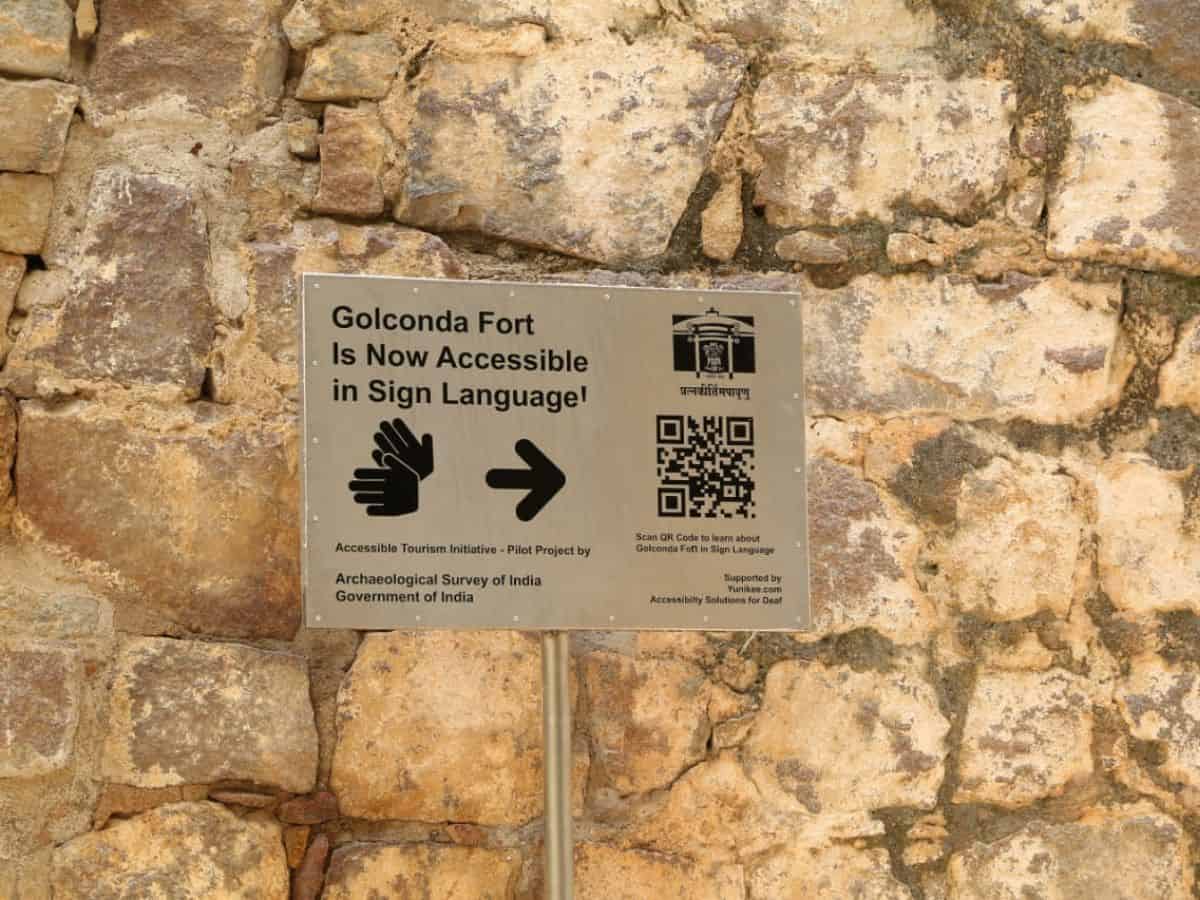
Hyderabad: New QR code boards in sign language have been installed at Golconda Fort and Ramappa Temple as a part of the Accessible Tourist Initiative, a pilot project by the Archaeological Survey of India (ASI) under the Government of India.
The initiative is supported by Yunikee.com provides accessible resources and solutions for the deaf.
The move has been aimed as an inclusive measure towards deaf and dumb visitors who come to visit the UNESCO-recognised heritage sites and tourist attractions in the city.
History of Golconda Fort
The Golconda Fort’s origins are traced back to the 14th century when the Rajah of Warangal Deo Rai (under the Kakatiya Kingdom which ruled from Warangal) built a mud fort. It was taken over by the Bahmani Empire between 1358 and 1375. Later, it was developed into a full-fledged citadel by Sultan Quli who founded the Qutb Shahi kingdom in 1518 following the death of the last sovereign of Bahmani Emperor Mahmud Shah.
Sultan Quli was a commander and later governor of Tilang (Telangana), under the Bahmani Empire (1347-1518), when its second capital was at Bidar. Sultan Quli, who was originally from Hamadan in Iran, rose to the level of Governor under the Bahmani Empire in the early 16th century. At this point in time, he was given the fort, around which he began developing a walled city. It eventually came to be called Golconda Fort (a name derived from Telugu Golla-conda, or shepherds’ hill).
The fort has 87 bastions, and eight gates, of which a few are not accessible to the general public as they are under the army’s control. It is believed to be one of the Deccan’s most impregnable forts and had kept Mughal emperor Aurangzeb’s army at bay for eight months until he succeeded and conquered Hyderabad in 1687.
Hyderabad was founded in the year 1591 by Mohammed Quli Qutb Shah, the grandson of Sultan Quli, with the Charminar being the city’s foundation. The city turned 429 years old in 2020.
History of Ramappa Temple
The 800-year-old Kakatiya Rudreshwara Ramappa temple recently came to the limelight for receiving the UNESCO World Heritage Site status. The temple was constructed during the Kakatiya period, around the year 1214, by a general from the kingdom. It has an architecture which is said to be something that is considered a ‘symphony in stone’, and is dedicated to the god Rudreshwara.
Its Gopuram (upper portion) is built with light bricks that were built with sandbox technology, which makes it very unique.



